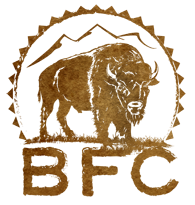If there is one great thing we can accomplish for American bison in the Custer Gallatin National Forest plan revision it is to secure a standard for restoring connectivity to habitat.
Why is connectivity important?
Connectivity to habitat provides linkages for American bison movements within their home ranges, dispersal, genetic interchange, and the "long distance range shifts of species, such as in response to climate change." 36 C.F.R. § 219.19.
Habitat connectivity is key to "maintaining species viability and associated biological diversity," so say the Custer Gallatin National Forest biologists who wrote the draft Terrestrial Wildlife Report (2016).
According to the biologists, "[t]here are two primary requirements for habitat connectivity. The first is that suitable habitats are present for species of interest, and the second is that there are no barriers to movement (USDA 2006)."
We know there is ample suitable habitat available. So what barriers to connectivity for American bison has the Custer Gallatin permitted on the National Forest?
Fencing, and lots of it:
- 695 feet of electrified fencing to "maintain a bison corridor fence" on the Royal Teton Ranch under a multimillion dollar 30-year lease.
- 900 feet of jackleg fencing along the Yellowstone River near Yankee Jim Canyon and cattle guards on HWY 89 to stop bison from migrating beyond Gardiner Basin.
- More jackleg fencing and cattle guards on HWY 287 in Hebgen Basin "to prevent bison from migrating further west, toward the Madison Valley, which is exactly the purpose of the fence."
Cattle, and habitat allocated for cattle in American bison range on the National Forest.
Each cattle allotment is a barrier to year-round access to habitat for American bison because the State of Montana does not permit any contact with cattle.
According to grizzly bear biologists, managing for cattle also displaces American bison on the National Forest and removes a key grizzly bear food at the same time it brings grizzly bears into conflict with cattle resulting in dead bears.
The Custer Gallatin’s adoption of the State of Montana's "tolerance zones" including Zone 3, is a standard enforced to exclude American bison from National Forest habitat. Zone 3 prohibits migratory bison from accessing habitat in their home range. Tolerance also means no tolerance in the government’s mind.
Clearly, the Custer Gallatin National Forest's permitting decisions are substantial barriers to restoring connectivity for American bison.
American bison have lost all 14 migration routes or corridors in the Greater Yellowstone ecosystem according to scientist Joel Berger (2004).
With human developments gobbling up more habitat, it is not enough for the Custer Gallatin National Forest to adopt a slippery guideline to "facilitate bison expansion into unoccupied, suitable habitat, management actions should not impede bison movement."
Restoring connectivity for American bison must be adopted as a forest wide standard.
Securing a standard for connectivity would be a great accomplishment for a migratory species that needs our help. Remember to ask for it in your comments. June 6 is the final day to get your comments in.
Nitsíniiyi’tak, Pidamaya, Thank you.
Darrell Geist, habitat coordinator
Buffalo Field Campaign







